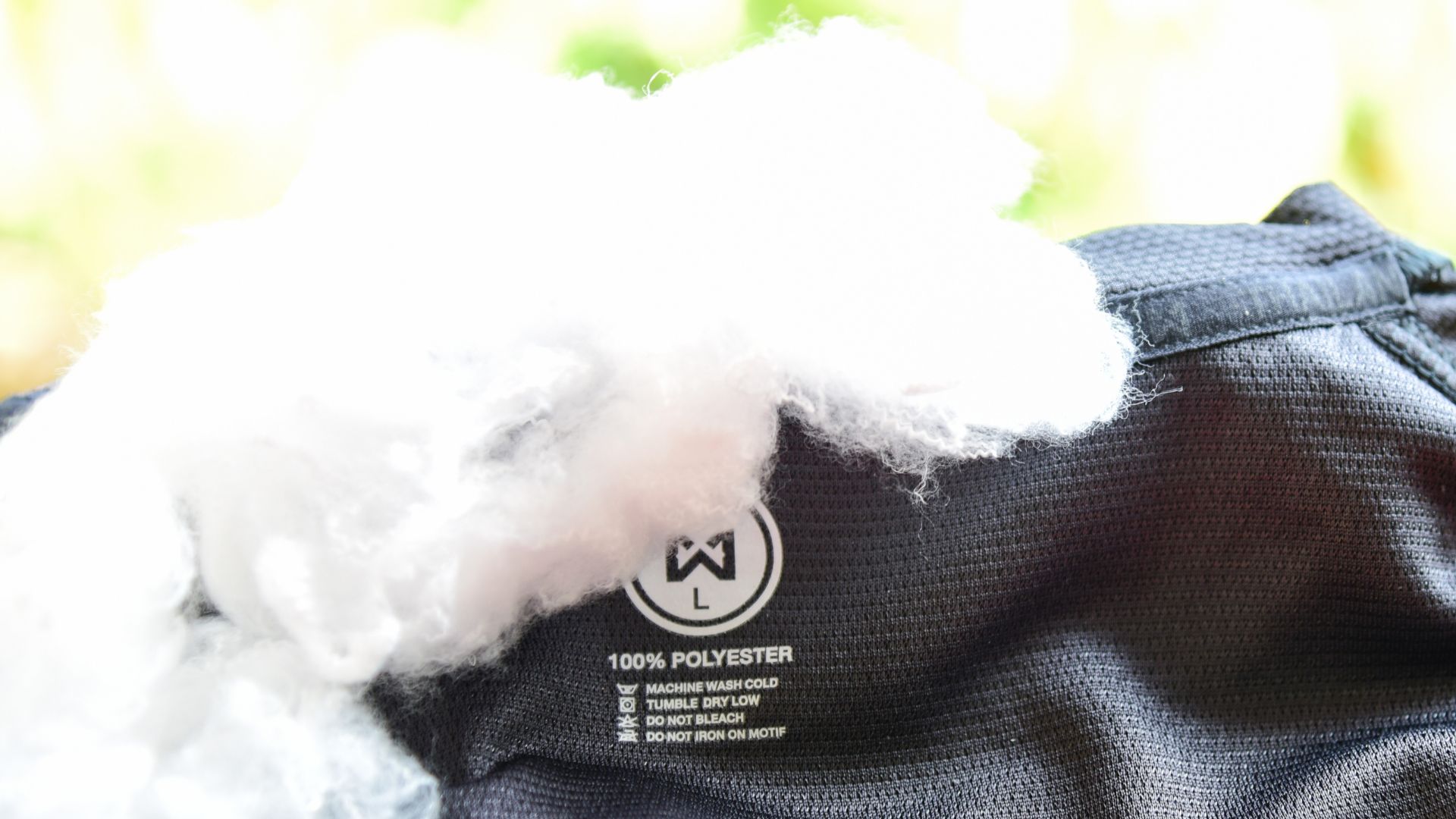Polyester is a synthetic material widely represented in fashion, especially on the side of fast fashion brands. Protean, polyester (and its variants such as nylon, polyamide, elastane or lycra) is everywhere, yet remains relatively unknown.
Polyester: a synthetic material derived from petroleum
In the large family of polymers (giant molecules that can be natural or synthetic) there are plastic materials, including polyester. It is a derivative of the oil industry. It is a synthetic material.
Polyester garment care
What are the benefits of polyester for your clothes?
- It is a very mechanically resistant material. Mixed with natural materials, polyester can give them strength.
- Polyester resists creases, even during and after washing (up to a temperature limit of 40°C).
- It is a material that is very easy to maintain and lasts a long time.
What are the disadvantages of polyester for your clothes?
- Polyester is not very breathable, so you can get warm quickly.
- When you sweat in it, the sweat stays on the skin instead of evaporating, which can cause bad odors (unless it’s polyester microfibers like sportswear in technical matters or some lingerie items).
- This material is not biodegradable.
- Generates static electricity.
How to wash a polyester garment?
To wash polyester clothes correctly, nothing very complicated. The only point of vigilance to keep in mind is the temperature : never above 40°C. Otherwise creases will form which will remain permanent. A dryer that is too hot can also have an irreversible anti-wrinkle effect. Polyester does not need to be ironed (unless it is a mixed material garment such as 50% cotton, 50% polyester) as it is a wrinkle resistant material (provided it is not washed above 40°C, again) .
Other, regardless of the spin level, program or detergent.
On the other hand, polyester can release microplastics in the wash. against itwe can add to filtered (such as Filtrol or PlanetCare) at the washing machine outlet to reduce the impact of micro particles on the environment. Alternatively, you can buy dedicated spheres (like the Cora Ball) to be placed directly in the washing machine drum so that the microfibers are captured. There is also the Guppyfriend: a bag into which to tuck his clothes before placing them in the drum.
Polyester and the textile industry
How is polyester made?
Polyester was invented in the 1940s by two British chemists, then it has been marketed since the 1950s, mainly in the United States and Europe. It was immediately a great success, because it is a material that does not need to be ironed and is very easy to wash.
Today it has become the most produced synthetic fiber in the world and represents 50% of the fibers used in fashion. It is now mainly produced in Asia, the United States and Europe (rather in Italy).
Two chemical compounds (an alcohol and an acid) are extracted from petroleum and reacted at high temperature and under vacuum to obtain a solid material which is polyester. We will then melt it, then stretch it to obtain filaments that we will twist, thus obtaining a very solid polyester yarn. Once wound onto a bobbin, the threads are sent to factories to be woven or knitted into fabrics. These then go through the finishing box: chemically or mechanically treated to provide the desired properties (color, matte or glossy finish, etc.).
What is the impact of polyester on the environment?
When you make a material from petroleum, you have to take into account that it generates a lot of CO2, especially when it’s extracted.
Polyester finishing treatments can also pollute the air and/or water depending on the country where this step is performed. This can be a problem for the textile workers who deal with it, but also for the people who live in the area of the production and processing plants.
From drilling for oil to becoming a garment, polyester travels a lot: the yarn is produced in country X, then often made into fabric in country Y, before arriving in garment factories in country Z to become an affordable part for consumers . Transport itself is one of the most polluting phases in terms of CO2 impact for the production of polyester (as for most raw materials).
Depending on the rules governing the use of chemical products, the production turns out to be more or less polluting: it is produced in a less harmful way in Europe and the United States than in Asia or Africa. It is in these last two continents that the financial costs are the lowest: it is therefore there that the brands are increasingly relocating. But if countries don’t necessarily enact laws to limit this pollution, ordinary consumers can lobby brands to encourage them to set more stringent specifications. Some brands guarantee full traceability of their garments, including those made of polyester.
Washing polyester garments causes slight abrasion which generates micro particles. These escape sewage treatment systems and end up polluting the oceans. These are called microplastics. These are not bioaccumulative: if the aquatic fauna manages to swallow them, they are expelled after digestion. Marine animals do not store plastic in their digestive systems.
What are the alternatives to polyester?
If you want to turn to greener materials than polyester, there are myriad alternatives. Starting from artificial materials such as tencel (also called lyocell). Or better yet: materials of natural origin such as wool, cotton, linen or even silk.
Cover photo: RecycleMan by Getty Images.
The latest articles on
fashion industry
-
Young designers, web3, metaverse: what will the future of fashion look like?
-
The new Louis Vuitton x Yayoi Kusama collaboration puts peas in the big ones
-
What is fast fashion? Definition, social and environmental consequences
-
Reducing the shopping budget in 2023 is the intention of 80% of the French
-
What is Acrylic? All about this synthetic fabric
-
The Finns, voted Europe’s most responsible consumers, it’s official
Source: Madmoizelle
Mary Crossley is an author at “The Fashion Vibes”. She is a seasoned journalist who is dedicated to delivering the latest news to her readers. With a keen sense of what’s important, Mary covers a wide range of topics, from politics to lifestyle and everything in between.




.png)
